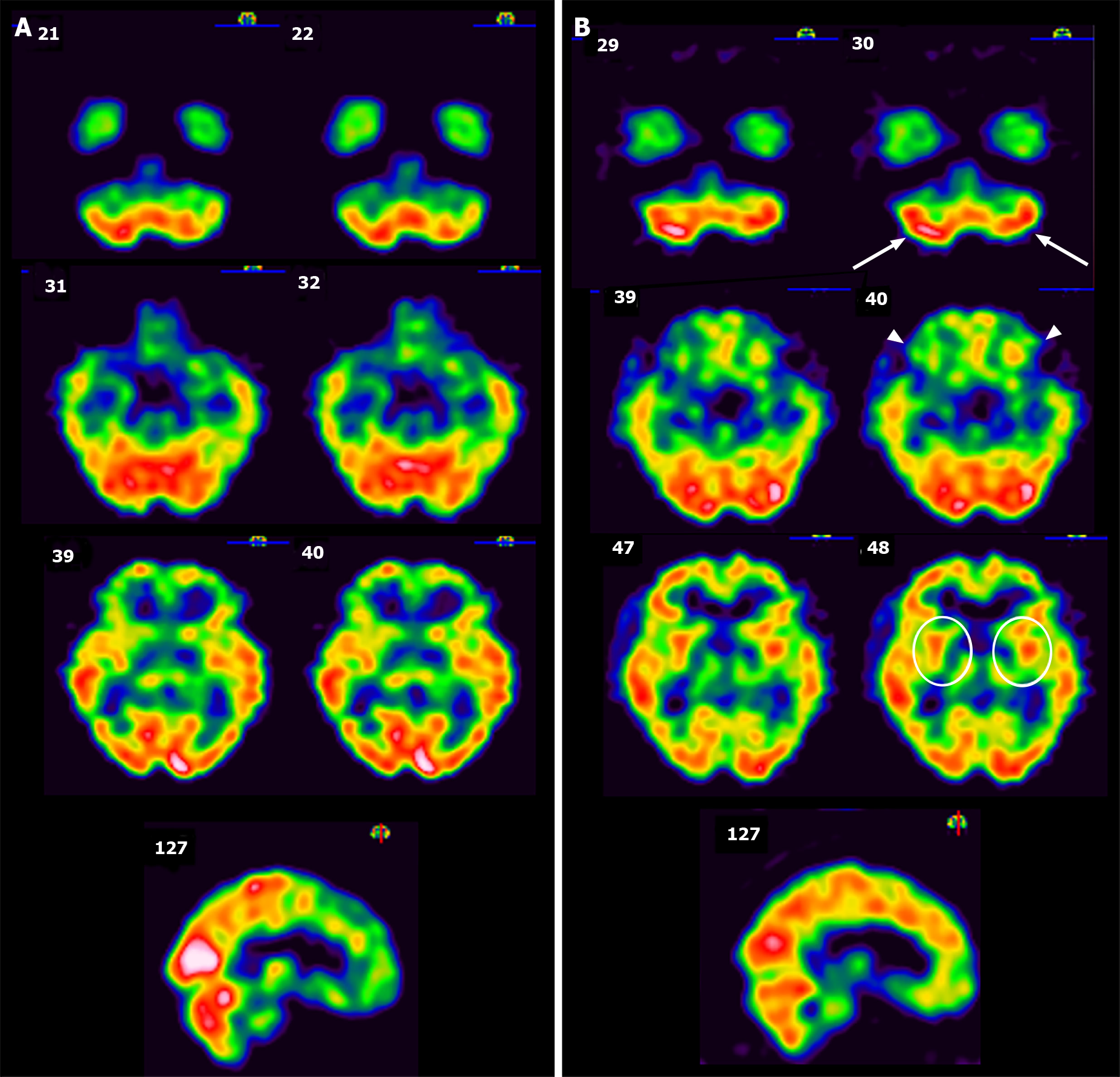Copyright
©The Author(s) 2021.
World J Clin Cases. May 6, 2021; 9(13): 3048-3055
Published online May 6, 2021. doi: 10.12998/wjcc.v9.i13.3048
Published online May 6, 2021. doi: 10.12998/wjcc.v9.i13.3048
Figure 2 Technetium-99m ethyl cysteinate dimer single-photon emission computed tomography images of the patient.
A: Single-photon emission computed tomography images before intravascular laser irradiation of blood therapy. Prominent hypoperfusion can be seen in the axial views of the left cerebellum, bilateral frontal lobe, and bilateral striata (from top row to bottom row). The sagittal view shows hypoperfusion in the parietal lobe and frontal lobe; B: Follow-up single-photon emission computed tomography images after 3 courses of intravascular laser irradiation of blood. Greatly improved perfusion can be seen in the bilateral cerebellum (arrow), bilateral frontal lobe (arrowhead), bilateral striata (circle), and parietal lobe (sagittal view). Intensity of photon uptake is shown in color, e.g., white represents the strongest signal intensity and thus greater perfusion, followed by red, yellow, green, blue, and finally black.
- Citation: Liu CC, Hsu CS, He HC, Cheng YY, Chang ST. Effects of intravascular laser phototherapy on delayed neurological sequelae after carbon monoxide intoxication as evaluated by brain perfusion imaging: A case report and review of the literature. World J Clin Cases 2021; 9(13): 3048-3055
- URL: https://www.wjgnet.com/2307-8960/full/v9/i13/3048.htm
- DOI: https://dx.doi.org/10.12998/wjcc.v9.i13.3048









